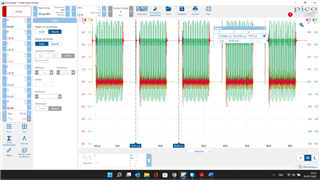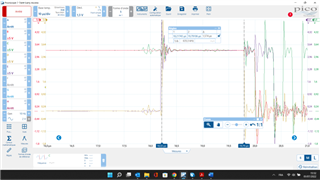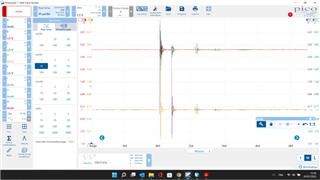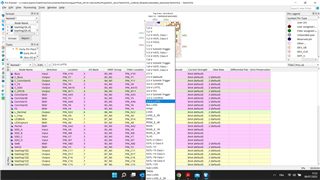Hi Team,
The customer is having issues with the ADC SPI communication. Kindly refer to the information below:
I can read te data but from time to time the ADC « fails » to convert data.
I follow the datasheet and code a SPI in a FPGA to get the data from the ADC.
So I send a conversion request on CONSTA, B, C and D at the same time, then wait for Busy to drop and put 0 on FS to read the data on SDO_A, B, C and D. The SCLK is generated only when the data are red from the FPGA.
SCLK = 2,75 MHz -> clock to synchronize the data on SDOA, B, C , D
Conv Clk = 50 kHz -> frequency to initiate a conversion sequence
Green trace : SCLK
Red trace : FS
Blue trace : CONVST
Brown trace : Busy
The two first pictures show the correct behaviour, I can read the data correct


The Following picture show the signals when the conversion fails. Busy picks up for a couple of ns an drops immedialtely, apparently the conversion fails as I can’t imagine that the conversion is so fast. It takes usually (on a successful conversion) around 2 µs to make a conversion.


I don’t think the ADC has an issue, there is probably something I am missing. Any advice help would be highly appreciated.
I hope you can help the customer.
Thanks!
Regards,
Marvin



